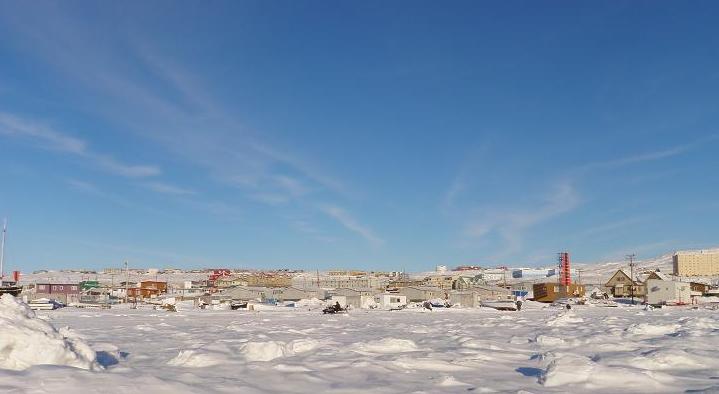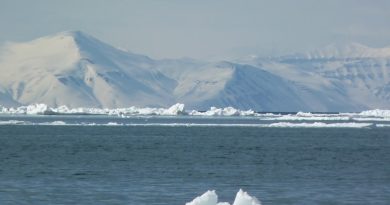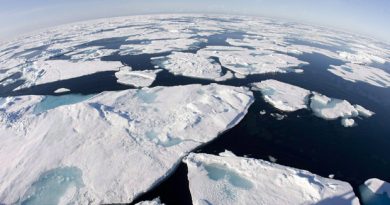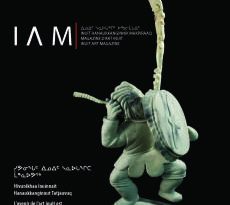Blog: And now for the good news …

I won’t begin, as others have, by apologizing for making a year-in-review list.
I happen to like lists, and it’s the perfect time of year to take stock of just how well things are going in our beloved North.
It’s a particularity of human nature, and public policy, that we are drawn to the bad news stories of the day. There is some pragmatism to it – we can take for granted the things that work well but need to roll up our sleeves to tackle the things that don’t. Progress won’t happen if we don’t know what needs improvement.
But the downside is the way in which it reinforces negative stereotypes, particularly in the North, until many of those unacquainted with the closeness and rootedness of northern communities see only addictions and dependence; those who only see dark images of oil sands production don’t see the wondrous expanse of unspoiled nature co-existing with well-managed developments; and those who don’t understand the dynamics of Arctic politics see only a brewing Cold War. But a lot is going right in the Arctic, and 2013 was a good year on a lot of fronts.
Here are some of the best examples:
1. An Inuk assumed the Chair of the Arctic Council
This refers, of course, to Leona Aglukkaq, the Canadian MP for Nunavut and current Minister for the Environment who assumed the Chair of the Arctic Council this May when Sweden handed the reins to Canada. Although the role has typically been given to the Foreign Minister of whichever country holds the Chairmanship for its 2-year cycle, Stephen Harper appointed Aglukkaq in recognition that her perspective, as someone who grew up in the Arctic, was particularly relevant. Indigenous peoples got a seat at the Arctic Council table when it was established in 1996. But now one of their own is at the head of that table. This is not mere symbolism.
2. RAIPON is back in business
The Russian Ministry of Justice suspended RAIPON, the Russian Association of Indigenous Peoples of the North, back in November 2012 for failure to comply with state legislation governing non-governmental organizations. The decision appeared largely political.
RAIPON is one of six Permanent Participants in the Arctic Council, and it was telling in the aftermath of the suspension how integral it, and its indigenous colleagues, are now viewed to its activities and identity. The Arctic Council immediately issued a statement “expressing concern” about the decision (in diplomatic legalese that’s actually pretty tough language). I don’t know the backstory, but the decision of Russian SAO Anton Vasiliev to sign on to that statement looks like one of the most unheralded but personally and professionally courageous acts of the year. Due at least in part to international pressure, RAIPON was reinstated in March 2013.
3. Black carbon levels are down
Levels of black carbon being carried to the Arctic have roughly halved since the 1990s. You don’t need to be a scientist to know something called “black carbon” is probably bad. In addition to its polluting quotient, it can increase temperatures by absorbing sunlight and energy. So its reduction is good news.
The fact that it’s due less to a conscious environmental policy than to the decline of industrial production following the collapse of the Soviet Union makes it no less significant. But, as these recommendations from an Arctic Council Task Force make clear, more can and should be done, but the Arctic states seem to be taking the issue seriously.
4. Vegetation is up
The length of the growing season has increased in the Arctic by 9 days a decade since 1982, apparently apparently tall shrubs and trees to expand their range across the Arctic. I know this is a product of man-induced climate change – but it’s nice to know the inevitable Arctic warming has some positive notes, and who doesn’t like more greenery and biodiversity?
5. Mercury Agreement reached
After four years of negotiations, a global mercury reduction agreement was signed in October. Many people of the north are well aware of the health dangers imposed by high levels of mercury creeping through the food chain and into their traditional diet. Although almost all of the emissions originate outside of the Arctic, many settle there. The Agreement is a very important step in addressing this health challenge for peoples of the North; and a pretty impressive act of global governance in which Arctic states and peoples were heavily involved.
6. Co-operation in Op Nanook
With all of the recent fanfare over claims to the North Pole, it’s nice to remember that in this year’s Operation Nanook, Canada’s pre-eminent “Arctic sovereignty” exercise, the Russians were invited to participate as observers. It reminds us that the people that really maintain our safety and security know that miscommunication and hyperbole are the greatest threats in the Arctic theatre.
7. NWT Devolution
The NWT becomes the latest in a series of Arctic sub-regional governments to assume greater responsibility over local decision-making, as a final Devolution Agreement was signed in June 2013. The Agreement will transfer decision-making on public land, water and resources to the NWT government, which will also start keeping up to 50% of royalty revenues from resource development, a significant new source of revenue. The Arctic has really been a model for devolution of powers to indigenous and sub-regional governments in the past 40 years, and the NWT is one more step in the right direction of placing power at the most local level capable of assuming it.
8. Inuit Life Expectancy and High School Graduation Rates are Up
A recent Global News headline read “Inuit life expectancy trails rest of Canada”. True. But it also pointed out that between 1989 to 2008, life expectancy rose a whopping 4.2 years for Inuit men and 1.7 years for women. And while numerous articles and reports have pointed out that high school graduation rates are dismal in Nunavut, little is made of the fact that they are a huge improvement from the 1980s, from a 10% graduation level to about 25% today. I will bet that as the StatsCan data from the 2011 census gets compiled and analyzed, however flawed, they will similarly show across the board improvements in educational attainment, household income and territorial GNP.
If one can complain about the amount of time progress is taking, they can’t complain that none is happening at all. Because although there is a lot of work left to be done, Northern Canada heading in the right direction in so many, tangible ways. Governments and the public take for granted that Northerners should have a role in the management of their own policy; that protecting the environment is a normal cost of doing business; and that co-operation is preferable to conflict. At this time of year, we should take a moment to recognize that these small successes over time have contributed to a mountain of achievement.
To read more of Heather Exner-Pirot’s blogs, click here



